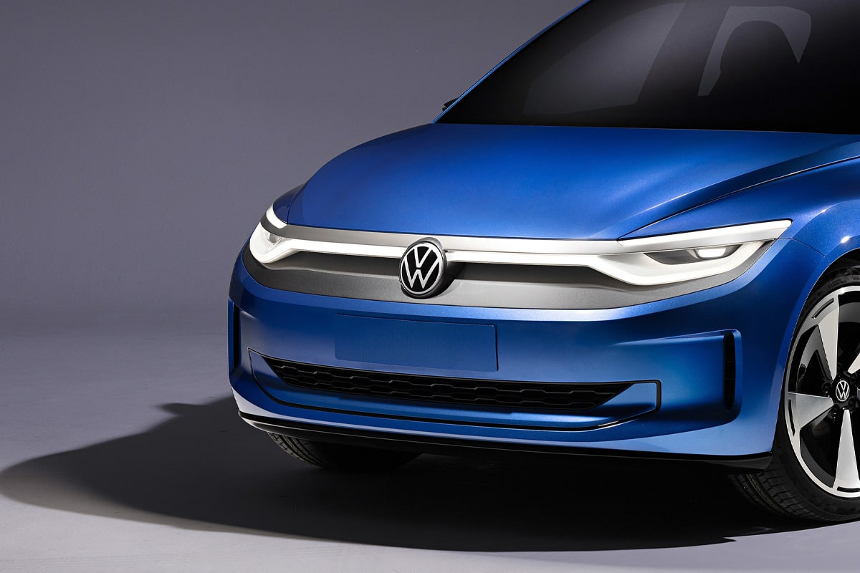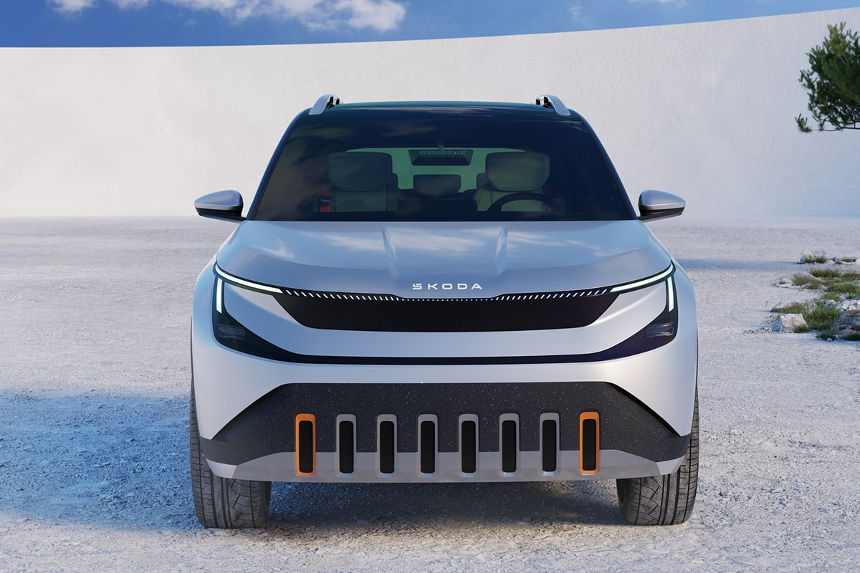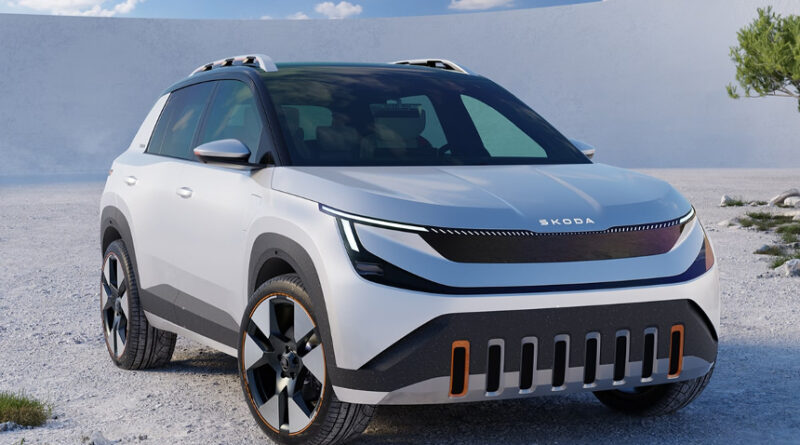Volkswagen & Skoda Are Moving Forward With Plans For Less Expensive Electric Cars
Everybody is clamoring for less expensive electric cars. The Chinese have already figured out how to build them, but everyone is freaking out about how cheap cars from China will destroy traditional automakers. Tesla says it is going to build one — soon. Renault is planning an electrified version of its iconic Renault 5. Volkswagen Group is charting its own course toward less expensive electric cars. Here’s the latest on those cars’ underdevelopment by Volkswagen.
Volkswagen ID.1 Moving Forward

At a financial presentation this week, Thomas Schäfer, CEO of the Volkswagen brand, said work on the ID.1 (that name may change when the car goes into production) is progressing and the car is expected to debut in 2027 at a starting price of €20,000. Although work on the design is underway, there are still numerous fundamental issues to be resolved, namely how to manufacture it in a way that allows the company to sell those cars at a profit.
The exact implementation and where the vehicle will be built is still to be decided. “This is extremely challenging economically,” Schäfer told Der Spiegel. Due to the high battery costs, a price of €20,000 can only be achieved if the vehicle is manufactured in substantial quantities.
Four scenarios are being examined to determine how this target can be achieved. Volkswagen is also rumored to be talking to Renault about cooperating on the small electric car to achieve larger quantities. The French company wants to launch an electric Twingo on the market in 2025, which will be based on a slimmed-down version of the AmpR Small platform. Volkswagen could adopt the platform and build the ID.1 together with Renault or have the French company build it for Volkswagen on a contract basis.
The ID.2, which has already been confirmed, will be presented as a series version at the end of 2025 and launched on the market in 2026. With an LFP batter, that car is expected to retail for €25,000. Volkswagen has yet to confirm whether this will also be available at market launch or only the more expensive top model with an NCM battery.
Schäfer says that the on sale date for the ID.1 was “deliberately” set one year after the ID.2, which is planned for 2026. He said a decision about where the car will be made and who will make it will be made “in the coming weeks.”
A year ago, Schäfer hinted that an ID.1 was under consideration after the ID.2 goes on sale. “That’s the next challenge. We’re working on that,” he said at that time, adding that there was talk of “several options,” including the acquisition of a platform from another manufacturer. However, Schäfer has since qualified his thoughts by saying he thinks “we can do it alone.” Schäfer said he intends to stick to the basic electric car plans despite the recent slump in EV sales. “The future of Volkswagen is electric. We stand by our plans,” he said.
Skoda Epiq Revealed

Also last week, Skoda released its financial information for 2023 and used the occasion to introduce the Skoda Epiq, a small SUV that will be based on the Volkswagen ID.2. The design study for the car is 4.10 meters long and will likely be on sale in 2025, the company said. Since the Volkswagen version of the same car is not expected until the following year, there is some question as to how accurate Skoda’s expectations are.
With its compact exterior dimensions, Skoda emphasizes a “spacious interior and up to 490 liters of luggage capacity.” However, Skoda is still holding back on technical data for the small 5-seater — in addition to the exterior length and boot volume, only a range of more than 400 kilometers has been mentioned.
The technology will come from the Volkswagen ID.2, which is based on the latest evolutionary stage of the MEB platform, but the Skoda will be front-wheel drive whereas the ID.3, which is based on the same platform, is rear-wheel drive. Volkswagen has suggested the ID.2all study concept will have a 166 kW (222 hp) motor and a range of up to 450 kilometers. If the flatter ID.2 sedan is capable of “over 400 km,” it seems realistic that an SUV, with its taller stance and higher Cd, should be able to travel 400 km on a single charge, Electrive says.
However, Electrive says, it is unlikely that either the Volkswagen ID.2 or the Skoda Epiq will offer 400 kilometers for the base price of €25,000. The 450 km range of the prototype ID.2 is with a 60 kWh NMC battery pack. The base model of both cars will likely come with a 40 kWh LFP battery, which will result in considerably less range.
While the production version of the VW ID.2 small car will be manufactured alongside the Cupra Raval at the Seat plant in Martorell, the small car SUV will be produced at the Spanish VW plant in Pamplona. The crossover version of the ID.2 will probably be built there under the name ID.2 X along with the Skoda Epiq. However, confirmed technical data for all these new models is still lacking.
The styling of the Epiq is quite a bit different than the Skoda Enyaq, which still strongly resembles that of the company’s combustion engine cars, particularly with its large front grille. “It fully incorporates the powerful new Modern Solid design language — inside and out,” says Skoda. “Our new design language — Modern Solid — represents the next level of modernity. Smart functionality and practicality are harmoniously balanced by attractive new looks and our sustainability approach. The Škoda Epiq design study perfectly embodies all the key attributes of the new design language,” says Oliver Stefani, who is the head of design for Skoda.
The ‘sculptural bonnet’ in the front features Skoda lettering instead of the brand logo. “Its Tech-Deck Face in glossy black is a modern reinterpretation of the familiar Škoda grille and houses electrical devices like the distance radar and the front camera. The Tech-Deck Face is flanked by bifunctional, T-shaped LED elements for the daytime running lights and indicators. The front headlamps are in a lower, secondary position,” the company says. There is also talk of a “robust front bumper” and a “striking spoiler.”
“The coming Škoda Epiq will package a lot of car for an attractive price and a big interior with a compact size. Our customers want choices, which is why we are expanding our growing e-mobility portfolio into this popular segment,” said Skoda CEO Klaus Zellmer. “I hope these first design teasers demonstrate that the Epiq will shine because of its modern design, everyday range and user-friendly technologies — all of it affordable.”
The Takeaway
There is a message here and it is simply this. More affordable electric cars are coming, but they won’t be long range champions. Instead, they will likely have a range of about 300 km or less (+/- 150 miles) and an actual usable range of about 80% of those figures. City cars, in other words, they will be intended to be charged at home or at work in most cases. Don’t make the mistake that cheap electric cars from China are long distance champions either. Battery costs may be declining, but not enough to allow manufacturers to make EVs that are heroes on the highway at bargain basement prices.
Cars like the Yugo and Hyundai Excel were cheap, but could do a cross-continent run if necessary. There are not likely to be any equivalent electric cars any time soon. That’s a problem for people who say they need 300 miles of range but don’t want to spend more than $20,000. That ain’t happening any time this decade — and probably not next decade either.
Have a tip for CleanTechnica? Want to advertise? Want to suggest a guest for our CleanTech Talk podcast? Contact us here.
Latest CleanTechnica.TV Video

CleanTechnica uses affiliate links. See our policy here.

